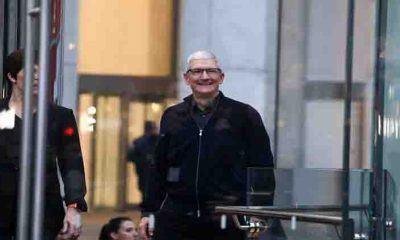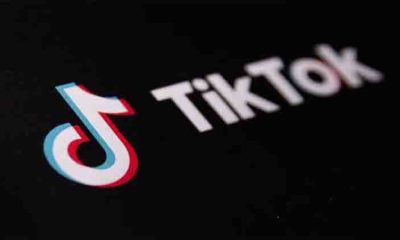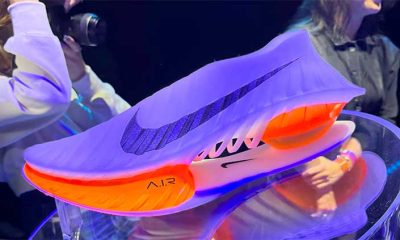For many electric vehicles, there is no way to repair or assess even slightly damaged battery packs after accidents, forcing insurance companies to write off cars with few miles – leading to higher premiums and undercutting gains from going electric.
And now those battery packs are piling up in scrapyards in some countries, a previously unreported and expensive gap in what was supposed to be a “circular economy.”
“We’re buying electric cars for sustainability reasons,” said Matthew Avery, research director at automotive risk intelligence company Thatcham Research. “But an EV isn’t very sustainable if you’ve got to throw the battery away after a minor collision.”
Battery packs can cost tens of thousands of dollars and represent up to 50% of an EV’s price tag, often making it uneconomical to replace them.
While some automakers like Ford Motor Co (F.N) and General Motors Co (GM.N) said they have made battery packs easier to repair, Tesla Inc (TSLA.O) has taken the opposite tack with its Texas-built Model Y, whose new structural battery pack has been described by experts as having “zero repairability.”
Tesla did not respond to a request for comment.
A Reuters search of EV salvage sales in the U.S. and Europe shows a large portion of low-mileage Teslas, but also models from Nissan Motor Co (7201.T), Hyundai Motor Co (005380.KS), Stellantis (STLAM.MI), BMW (BMWG.DE), Renault (RENA.PA) and others.
EVs constitute only a fraction of vehicles on the road, making industry-wide data hard to come by, but the trend of low-mileage zero-emission cars being written off with minor damage is growing. Tesla’s decision to make battery packs “structural” – part of the car’s body – has allowed it to cut production costs but risks pushing those costs back to consumers and insurers.
Tesla has not referred to any problems with insurers writing off its vehicles. But in January CEO Elon Musk said premiums from third-party insurance companies “in some cases were unreasonably high.”
Unless Tesla and other carmakers produce more easily repairable battery packs and provide third-party access to battery cell data, already-high insurance premiums will keep rising as EV sales grow and more low-mileage cars get scrapped after collisions, insurers and industry experts said.
“The number of cases is going to increase, so the handling of batteries is a crucial point,” said Christoph Lauterwasser, managing director of the Allianz Center for Technology, a research institute owned by Allianz (ALVG.DE).
Lauterwasser noted EV battery production emits far more CO2 than fossil-fuel models, meaning EVs must be driven for thousands of miles before they offset those extra emissions.
“If you throw away the vehicle at an early stage, you’ve lost pretty much all advantage in terms of CO2 emissions,” he said.
Most carmakers said their battery packs are repairable, though few seem willing to share access to battery data. Insurers, leasing companies and car repair shops are already fighting with carmakers in the EU over access to lucrative connected-car data.
Lauterwasser said access to EV battery data is part of that fight. Allianz has seen scratched battery packs where the cells inside are likely undamaged, but without diagnostic data it has to write off those vehicles.
Ford and GM tout their newer, more repairable packs. But the new, large 4680 cells in the Model Y made at Tesla’s Austin, Texas, plant, are glued into a pack that forms part of the car’s structure and cannot be easily removed or replaced, experts said.
In January, Tesla’s Musk said the carmaker has been making design and software changes to its vehicles to lower repair costs and insurance premiums.
The company also offers its own insurance product in a dozen U.S. states to Tesla owners at lower rates.
Insurers and industry experts also note that EVs, because they are loaded with all the latest safety features, so far have had fewer accidents than traditional cars.
‘STRAIGHT TO THE GRINDER’
Sandy Munro, head of Michigan-based Munro & Associates, which tears down vehicles and advises automakers on how to improve them, said the Model Y battery pack has “zero repairability.”
“A Tesla structural battery pack is going straight to the grinder,” Munro said.
EV battery problems also expose a hole in the green “circular economy” touted by carmakers.
At Synetiq, the UK’s largest salvage company, head of operations Michael Hill said over the last 12 months the number of EVs in the isolation bay – where they must be checked to avoid fire risk – at the firm’s Doncaster yard has soared, from perhaps a dozen every three days to up to 20 per day.
“We’ve seen a really big shift and it’s across all manufacturers,” Hill said.
The UK currently has no EV battery recycling facilities, so Synetiq has to remove the batteries from written-off cars and store them in containers. Hill estimated at least 95% of the cells in the hundreds of EV battery packs – and thousands of hybrid battery packs – Synetiq has stored at Doncaster are undamaged and should be reused.
It already costs more to insure most EVs than traditional cars.
According to online brokerage Policygenius, the average U.S. monthly EV insurance payment in 2023 is $206, 27% more than for a combustion-engine model.
According to Bankrate, an online publisher of financial content, U.S. insurers know that “if even a minor accident results in damage to the battery pack … the cost to replace this key component may exceed $15,000.”
A replacement battery for a Tesla Model 3 can cost up to $20,000, for a vehicle that retails at around $43,000 but depreciates quickly over time.
Andy Keane, UK commercial motor product manager at French insurer AXA (AXAF.PA), said expensive replacement batteries “may sometimes make replacing a battery unfeasible.”
There are a growing number of repair shops specializing in repairing EVs and replacing batteries. In Phoenix, Arizona, Gruber Motor Co has mostly focused on replacing batteries in older Tesla models.
But insurers cannot access Tesla’s battery data, so they have taken a cautious approach, owner Peter Gruber said.
“An insurance company is not going to take that risk because they’re facing a lawsuit later on if something happens with that vehicle and they did not total it,” he said.
‘PAIN POINTS’
The British government is funding research into EV insurance “pain points” led by Thatcham, Synetiq and insurer LV=.
Recently adopted EU battery regulations do not specifically address battery repairs, but they did ask the European Commission to encourage standards to “facilitate maintenance, repair and repurposing,” a commission source said.
Insurers said they know how to fix the problem – make batteries in smaller sections, or modules, that are simpler to fix, and open diagnostics data to third parties to determine battery cell health.
Individual U.S. insurers declined to comment.
But Tony Cotto, director of auto and underwriting policy at the National Association of Mutual Insurance Companies, said “consumer access to vehicle-generated data will further enhance driver safety and policyholders’ satisfaction … by facilitating the entire repair process.”
Lack of access to critical diagnostic data was raised in mid-March in a class action filed against Tesla in U.S. District Court in California.
Insurers said failure to act will cost consumers.
EV battery damage makes up just a few percent of Allianz’s motor insurance claims, but 8% of claims costs in Germany, Lauterwasser said. Germany’s insurers pool data on vehicle claims data and adjust premium rates annually.
“If the cost for a certain model gets higher it will raise premium levels because the rating goes up,” Lauterwasser said.
Post Views: 156


 Fashion3 months ago
Fashion3 months ago
 Fashion3 months ago
Fashion3 months ago
 Sports2 months ago
Sports2 months ago
 Sports2 months ago
Sports2 months ago
 Fashion2 months ago
Fashion2 months ago
 pakistan2 months ago
pakistan2 months ago
 pakistan2 months ago
pakistan2 months ago






















